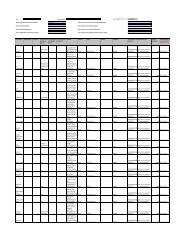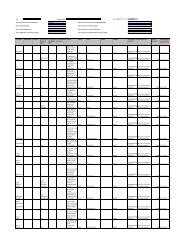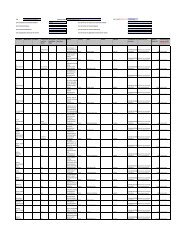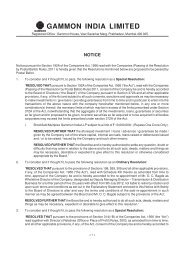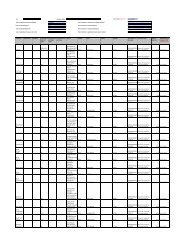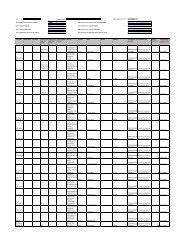GAMMON INDIA LIMITED
GAMMON INDIA LIMITED
GAMMON INDIA LIMITED
Create successful ePaper yourself
Turn your PDF publications into a flip-book with our unique Google optimized e-Paper software.
15. In respect of non-residents, the tax rates and consequent taxation mentioned above will be further<br />
subject to any benefits available under the Tax Treaty, if any, between India and the country in<br />
which the non-resident is resident. As per the provisions of Section 90(2) of the ITA, the<br />
provisions of the ITA would prevail over the provisions of the Tax Treaty to the extent they are<br />
more beneficial to the non-resident.<br />
B.2 Non-Resident Shareholders – Foreign Institutional Investors<br />
1. We are required to pay a “dividend distribution tax” currently at the rate of 16.995% (including<br />
applicable surcharge and education cess) on the total amount distributed or declared or paid as<br />
dividend. Under Section 10(34) of the IT Act, income by way of dividend referred to in Section<br />
115-O received on our Equity Shares is exempt from income tax in the hands of shareholders.<br />
However it is pertinent to note that Section 14A of the IT Act restricts claim for deduction of<br />
expenses incurred in relation to exempt income.<br />
2. As per Section 10(34) read with Section 115-O of the ITA, any income by way of dividends<br />
referred to in Section 115-O (i.e. dividends declared, distributed or paid on or after 1 April 2003<br />
by the domestic companies) received on the Equity Shares is exempt from tax.<br />
3. As per Section 2(29A) read with Section 2(42A), Equity Shares held in a company are treated as<br />
long term capital asset if the same are held by the assessee for more than twelve months period<br />
immediately preceding the date of its transfer. Accordingly, the benefits enumerated below in<br />
respect of long term capital assets would be available if the Equity Shares are held for more than<br />
twelve months.<br />
4. As per Section 10(38) of the ITA, long term capital gains arising from the transfer of long term<br />
capital asset being Equity Shares, where such transaction is chargeable to securities transaction<br />
tax, will be exempt to tax in the hands of the FIIs.<br />
5. As per Section 54EC of the ITA and subject to the conditions and to the extent specified therein,<br />
long-term capital gains (in cases not covered under Section 10(38) of the ITA) arising on the<br />
transfer of a long-term capital asset will be exempt from capital gains tax to the extent such capital<br />
gains are invested in a “long term specified asset” within a period of 6 months after the date of<br />
such transfer. It may be noted that investment made on or after April 1, 2007 in the long term<br />
specified asset by an assessee during any financial year cannot exceed Rs. 50 Lacs.<br />
However, if the assessee transfers or converts (otherwise than by transfer) the long term specified<br />
asset into money within a period of three years from the date of its acquisition, the amount of<br />
capital gains exempted earlier would become chargeable to tax as long-term capital gains in the<br />
year in which the long term specified asset is transferred or converted into money.<br />
A “long term specified asset” for making investment under this Section on or after 1st April 2007<br />
means any bond, redeemable after three years and issued on or after the 1st April 2007 by:<br />
National Highways Authority of India constituted under Section 3 of the National<br />
Highways Authority of India Act, 1988; or<br />
Rural Electrification Corporation Limited, a company formed and registered under the<br />
Companies Act, 1956.<br />
6. As per Section 74 Short-term capital loss suffered during the year is allowed to be set-off against<br />
short-term as well as long-term capital gains of the said year. Balance loss, if any, could be carried<br />
forward for eight years for claiming set-off against subsequent years’ short term as well as longterm<br />
capital gains. Long-term capital loss suffered during the year is allowed to be set-off against<br />
141





